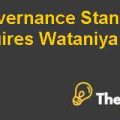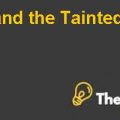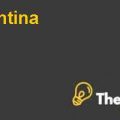Question 1. Can option pricing help justify why Micro Comp’s market capitalization is not zero?
ANSWER:
The Option Pricing Model justifies that whenever the firm or any individual wants to secure its risky assets the firm or individual investor then they buy the option instrument in which it gives an option to the buyer in the form of right to either buy or sell. For the Hamilton concerns, whenever a firm issues the debt, the firm sells its assets to the lender and shareholders of that firm buy back those assets as they have the option, pay back for the buying of those assets share holders payback the price at the time of maturity of that debt. This option is called the call option for purchasing of the firm’s assets.
As far as the Micro Comp’s case, if its assets value exceed the $150 million in two years than the shareholders would go for exercising of the call option and for that these shareholder would pay back the amount of bond holders and would gain the control of the Micro Comp and in this case the call option is “in the money”.
On the other hand, if the asset’s market value of Micro Comp remained lower than $150 million than the shareholders of the company would not go for exercising of the call option as it would generate loss and this is called as “out of the money”.
Micro Comp’s market capitalization was not zero because of the reason that when shareholders borrowed the money they sold the firm for the cash and these shareholders also purchase the call option to buy back the firm at the time of maturity.
Question 2. Can option pricing be used to value Micro Comp’s risky bonds?
ANSWER:
To value the risky bond of the Micro Comp, Black-Scholes Formula is used as it has the five key components in it. The first component is the Risk Free Rate that is 4.04% and the second component used in the formula is standard deviation, which shows the riskiness of the bonds that is calculated from the stock return based on weekly basis and in it 52 weeks are used. The third component is the time that is already determined, fourth component is stock price and the last component of the formula is strike price. The resultant of the formula is the PV of the risky bond.
To calculate the put option, price of the put option subtracts from the PV of the risk free bond that brings the value of the risky bond. To determine the Micro Comp’s assets value than the volatility should be taken of assets and if Micro Comp’s equity value is to be determined then the volatility of equity must be used. The valuation model that can be used for valuing the Micro Comp is based on the data given on assets or given on equity.....................
This is just a sample partial case solution. Please place the order on the website to order your own originally done case solution.
The first year of business school student got a summer job as an analyst at a major investment bank in Los Angeles, California. His first task was to establish the price of MicroComp junk-bonds in the market. Looking at the market sheet carrying value, it was quite clear that MicroComp was in financial straits. MicroComp department was $ 150 million, while the market value of its assets was $ 80 million. If MicroComp should pay off your debt at once, it will be forced into bankruptcy.
Obviously, MicroComp was "effective" by default, why its market capitalization remained $ 5 million? Why did not fall to zero? Students will use a version of the theory to answer these questions. "Hide
by Walid Busaba, Zeigham Khokher, Elliott Weinstein Source: Richard Ivey School of Business Foundation 6 pages. Publication Date: August 12, 2005. Prod. #: 905N11-PDF-ENG












